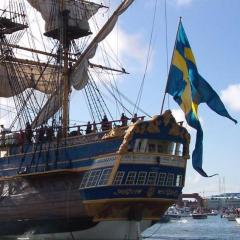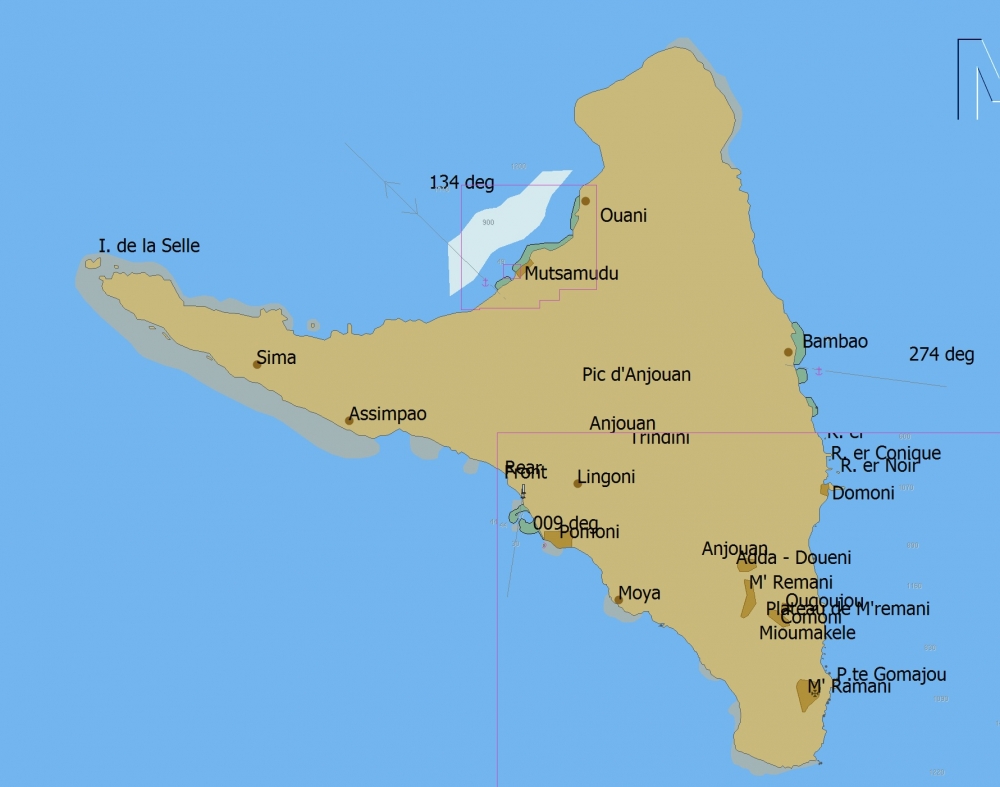-
Posts
66 -
Joined
-
Last visited
Profile Information
-
Gender
Male
-
Location
Europe
-
Interests
Pirates
-
Perhaps these sites can be helpful: https://www.threedecks.org http://www.historylogbook.org
-

Davy Jones and Fiddler's Green and Sea Myths
RoyalJames replied to lwhitehead's topic in Captain Twill
We are pretty off-topic here, but I guess we’re not bound the articles anymore… There are tools to automatically download what you are interested in instead of doing it by hand. It still takes some time to do it, but it’s the computer working anyway. I have some parts already stored. PM me if you want a copy. (But, even better would be if a super-user could make a copy of everything, that other users could download!) More off-topic, this is a nice site for tracking pirates and others www.historylogbook.org -
I'll miss the pub, especially Brand's On this day in history. I hope a new forum pops up somewhere far away from Facebook. Thanks all for interesting discussions during the years! Piratically though to end with a brave blast to go to Hell with.
-
Downing’s book is quite messy to read. He doesn’t tell the story chronologically, and it seems like he put down things as they popped up in his mind. Much of it is probably based on stories that he has heard from other people, and might not be fully correct, but I would say that that the big picture probably is true. His description of Plantain’s war with King Dick gets some support by Desforges-Boucher L'Ile Bourbon pedant la Régence and Jacobs de Bucquoy.
-
Perhaps this will be of help for locating the Brown's gardens? https://books.google.com/books?id=9eJoAAAAcAAJ&pg=PA103 The mentioned Saddle Island is the one called Ile de la Selle
-

The Motley Crew: how did multinational crews arise and work?
RoyalJames replied to Daniel's topic in Captain Twill
From Bucquoy, describing the order on Taylors ship in 1722: "Eben so machte er es auch mit den verschiedenen Nationen; diese musste er so zu verteilen, dass sich allemal bei sieben Mann wenigsten drei Engländer befanden, von welchen er versichert sein konnte dass sie ihm treu wären. Auf diese Art waren die Engländer allezeit die mehresten, und wenn es darauf ankam die mächtigsten: de übrigen viere waren etwa ein Franzose, ein Schwede, ein Portugiese, usw. Es konnte nichts gerbt oder getan werden, wovon Tailor nicht so gleich Nachricht bekam; und durch diese Politik regierte er sie, ohne dass sie merkten, dass man auf ihr Tun und Lassen genau Achtung gäbe." A little mixed up googeltranslation (but I guess you get it): "Just so he made it also with the various nations; this he had to be distributed such that all seven men least three Englishmen were, of what he could be assured that they would be faithful to him. In this way the English were always the more most, and when it mattered the most powerful: de remaining fours were about a Frenchman, a Swede, a Portuguese, etc. It could be tanned or done anything which Tailor not equal received message so; and by this policy he ruled them without they realized that they were exactly respect to their actions and omissions." -
RoyalJames changed their profile photo
-
Condent was perhaps one of the most successful pirates as he managed to retire with his wealth. In November 1720 he forced the ministry on Bourbon (today Reunion) to grant him and his crew of 135 men amnesty, by threats of severe attacks of French ships in the area. The amnesty was granted and as a part of the agreement Condent sank his Flying Dragon at Saint Marie and went to Bourbon in the ship Crooker. But for unknown reasons, only 32 men followed him. Condent must however have taken his part of the agreement seriously, because he was negotiating for the French when the Portuguese viceroy of Goa was taken by pirates while he still was on the island. In November 1722 he embarked the ship La Vierge de Grâce and went to France where he arrived in February the following year. There he got married and lived until he died in 1734, apparently as a French citizen. You can find these details and references in Robert Bousqet book Reunion esclavage traite noirs neg marron.
-
I have a digital copy of an academic paper written in 1848 regarding the Swedish Madagascar Affair. It’s in Swedish, but since it is digital I guess it can be translated to googlish. It also includes a letter written by Morgane to Charles XII. If anyone is interested, let me know. There are also traces of this in the Stuart Papers.
-
I finally took the time watching "What's Wrong with Black Beard?" with Kevin Duffus the other day (as discussed in the following thread: http://pyracy.com/index.php/topic/19504-whats-wrong-with-black-beard-by-kevin-p-duffus/). In one part of it he puts forward his theory that the Africans in Black Beard’s crew not were crew but slaves in the context of cargo.
-

La Buse the longest serving Golden Age pirate captain?
RoyalJames replied to Daniel's topic in Captain Twill
Are you saying that we cannot trust Wikipedia as a reliable source? I can’t recall seeing any reference to him wearing an eyepatch anywhere else. (Not even the French version of Wikipedia says anything about it). Supplementary question; is there any reference to any pirate wearing an eyepatch? -
Tracking Moody at this period: 1718 Nov 5, Carolina 1718 End of Nov, St Thomas, so the Virgin Islands (Sea Haugh, I think you misread it, it was a ship belonging to “Martinico”) 1718 Dec, Saint Cruise (Saint Croix?), again the Virgin Islands 1718 Dec, He fought a dutch ship at latitude 34, which would be back up in Carolina again. 1719 Mar or earlier, he was forced to leave the crew in a small boat somewhere around the Cape Verde. (From calendar of state papers, except last which is Snelgrave) To me it sounds pretty possible that Moody was at the Virgin Islands in the beginning of 1719. The Rising Sun was reported to be equipped with 36 guns, which I guess match the 30 well enough too. By the way, did Moody and England ever sign the 1718 act of grace pardon? I have seen the names James Moodey and Edward Norland..
-
I believe that slaves often were captured as prisoners by rival tribes or kings, and from them sold to the slave ships. And that not all Africans were considered potential slaves. As an example, Snelgrave who was a slave trader, describes a captain Segnor Joseph who he calls “a black gentleman”. Further, African guards were used on board the slave ships, referred to as “bombas”. I am unsure of their status, but they were clearly above the ordinary slaves. My underlying question, however, is how we shall interpret statements like this: “Deposition of John Brown, late Commander of the brigantine John and Thomas of Road Island. Antigua, 12th March, 1718/19. On Nov. 5th last he was taken off the Bay of Carolina by a pirate ship, the Rising Sun, William Moudy Commander, mounted with 36 guns and having on board 130 men, white and black.” My theory is that “blacks” aboard pirate ships always have to mean free men. If commercial ships didn’t have slaves among their crews, pirates probably didn’t either. But this is just a theory, feel free to attack it!
-
The pirates’ view of slaves has been debated before and the answer is probably as usual, that it differed from person to person and time to time. We know that some ships had free Africans among their crew and we also know that some pirates had slaves when they settled down / retired at land. But what about slaves in the crew? Do we know if any commercial ships had slave crews? My thought goes like this: if the commercial ships didn’t have slaves, the pirates probably didn’t either. Perhaps it was a too big risk to use slaves for such jobs? Sailors weren’t paid very much anyway, but still had some sort of motivation of the payment. And pirate ships easily found new recruits.
-
Interesting question and interesting answers! As for gravestones and cemeteries, on the island St Marie outside Madagascar there is a grave yard which is called the “pirate cemetery”. It is situated in the bay just inside of the former pirate town at île aux Forbans, which was used by pirates during several decades. It is not unlikely that the pirates used this spot to bury their dead, but a little surprising there seem not to be any documented study of it (at least not what I have found). Another thing related to graves is Captain Carpenter’s tomb, which shall have been situated on Mauritius in Carpenter’s Bay just north of Port Louis. I don’t know anything about Carpenter, but apparently he was a captain and buried on land (and not at sea). Pirates however used his tomb to write a message on the wall. Perhaps it says something about their respect of the dead and their graves?


